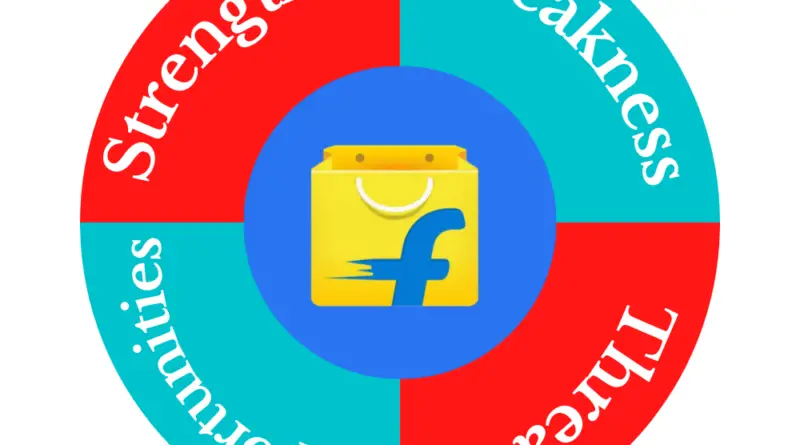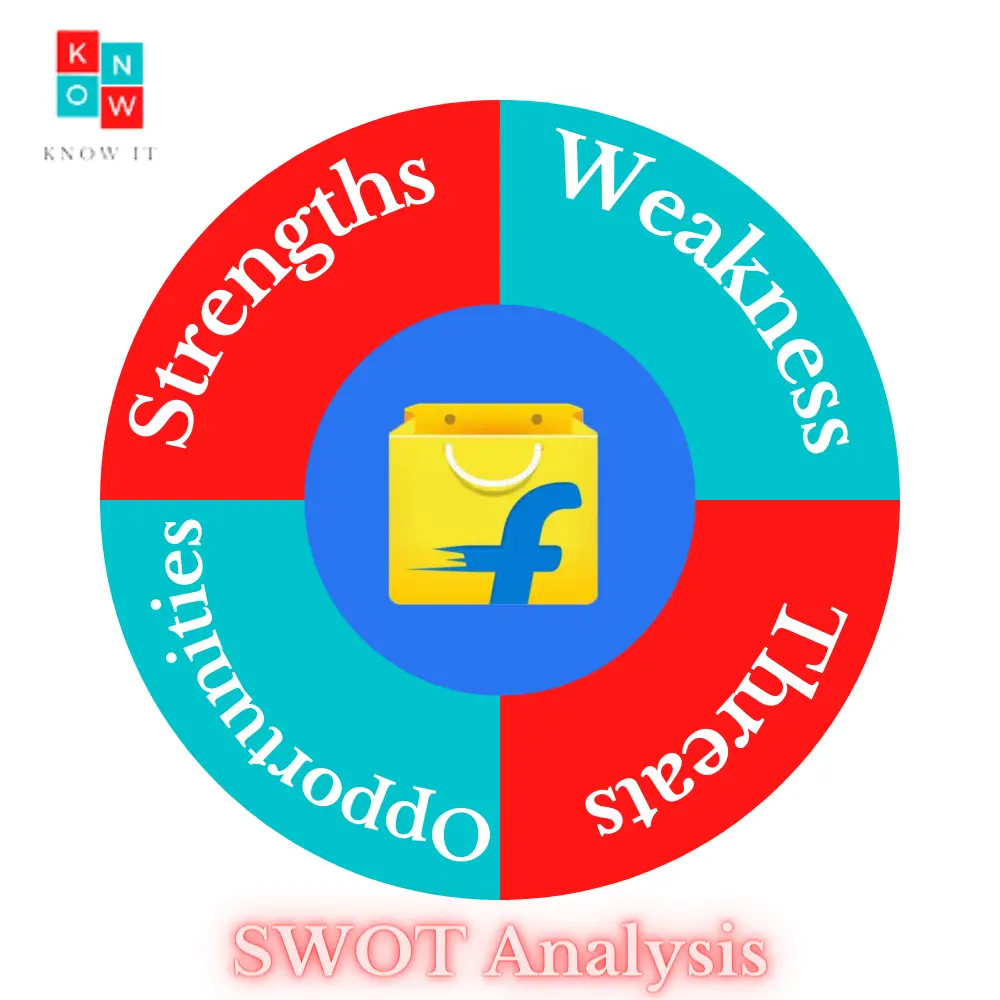SWOT Analysis of Flipkart: Unveiling the Strengths, Weaknesses, Opportunities, and Threats
Flipkart, widely recognized as India’s largest e-commerce marketplace, has played a pivotal role in shaping the country’s digital retail landscape. To gain a comprehensive understanding of Flipkart’s current position and its future prospects, conducting a SWOT analysis is essential. In this blog post, we will explore Flipkart’s strengths, weaknesses, opportunities, and threats, shedding light on the factors that have contributed to its success as well as the challenges it faces in the ever-evolving e-commerce industry.
SWOT Analysis of Flipkart
Strengths
1. Established Brand:
Flipkart has established itself as a trusted and reputable brand in the Indian market. Its early entry into the e-commerce space, coupled with innovative marketing strategies, has helped build strong brand recognition and customer loyalty.
2. Extensive Product Range:
Flipkart offers a wide range of products across various categories, including electronics, fashion, home appliances, and more. Its extensive product catalog ensures that customers can find everything they need in one place, enhancing convenience.
3. Robust Logistics Network:
The company has invested heavily in building a robust logistics network, enabling fast and reliable deliveries across the country. This has helped Flipkart gain a competitive edge by ensuring a seamless customer experience.
4. Strong Customer Service:
Flipkart has prioritized customer satisfaction by providing exceptional customer service. Its dedicated support team resolves queries and concerns promptly, fostering positive customer relationships.
5. Strategic Partnerships:
Flipkart has formed strategic partnerships with various brands and sellers, allowing it to offer exclusive products and discounts to customers. These partnerships have helped in expanding the platform’s product range and attracting a larger customer base.
Weaknesses
1. Intense Competition:
Flipkart faces fierce competition from domestic and international e-commerce players, such as Amazon and Reliance JioMart. This competition puts pressure on maintaining market share and profitability.
2. Dependency on Discounts:
Flipkart heavily relies on offering discounts and deals to attract customers. While this strategy helps in driving sales, it can impact profit margins and brand perception in the long run.
3. Inventory Management:
Managing inventory efficiently can be a challenge for Flipkart, especially during peak seasons and sales events. Ensuring optimal stock levels and avoiding stockouts is crucial for customer satisfaction.
4. Seller Quality Control:
Flipkart’s marketplace model relies on third-party sellers. Maintaining consistent quality control across a large number of sellers can be a challenge, and occasional instances of counterfeit or low-quality products can negatively impact customer trust.
Opportunities
1. Expansion into Tier 2 and Tier 3 Cities:
Flipkart has the opportunity to tap into the growing e-commerce market in tier 2 and tier 3 cities of India. By improving logistics infrastructure and tailoring offerings to these markets, Flipkart can capture a larger customer base.
2. Embracing Omni-channel Retailing:
Integrating offline and online retail channels can provide Flipkart with a competitive advantage. By leveraging its parent company Walmart’s physical stores and exploring partnerships with local retailers, Flipkart can offer a seamless shopping experience.
3. Diversification into New Product Categories:
Flipkart has the potential to diversify its product offerings beyond traditional categories. Expanding into niche segments or introducing private-label products can help capture new market segments and increase customer loyalty.
4. Leveraging Data Analytics:
Flipkart can leverage its vast customer data to gain valuable insights and personalize customer experiences. By utilizing advanced data analytics techniques, it can offer personalized recommendations and targeted marketing campaigns.
Threats
1. Regulatory Challenges:
The e-commerce industry in India faces evolving regulations and policy changes. Changes in foreign direct investment (FDI) rules and potential restrictions on deep discounts can pose challenges for Flipkart’s business model.
2. Technological Disruption:
Rapid advancements in technology can disrupt the e-commerce industry. New technologies, such as augmented reality (AR) and virtual reality (VR), can revolutionize the way customers shop, and Flipkart needs to stay ahead of these technological shifts.
3. Changing Consumer Preferences:
Consumer preferences and behaviors are constantly evolving. If Flipkart fails to adapt to changing trends, it risks losing relevance and customer loyalty to competitors that better cater to evolving needs.
4. Supply Chain Disruptions:
Disruptions in the supply chain, such as natural disasters or transportation issues, can impact Flipkart’s ability to deliver products on time. Building a resilient and agile supply chain is essential to mitigate these risks.
Conclusion
As one of India’s leading e-commerce platforms, Flipkart has achieved remarkable success. However, it faces both internal and external challenges that need to be addressed to maintain its market position and continue its growth trajectory. By capitalizing on its strengths, addressing weaknesses, exploring new opportunities, and mitigating threats, Flipkart can navigate the dynamic e-commerce landscape and remain a dominant player in the Indian market.




